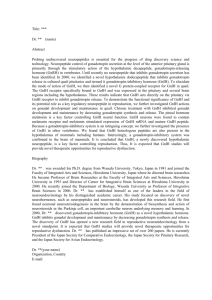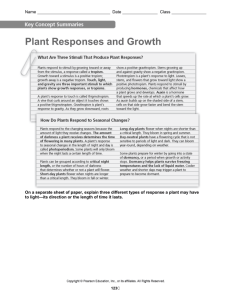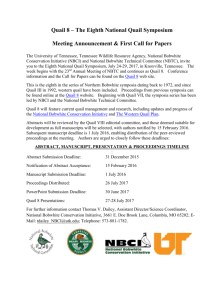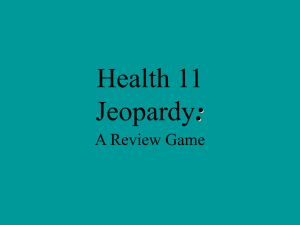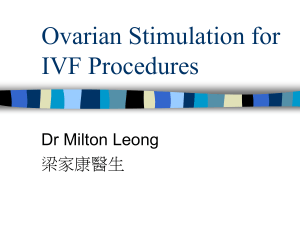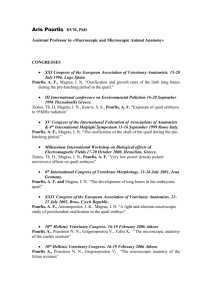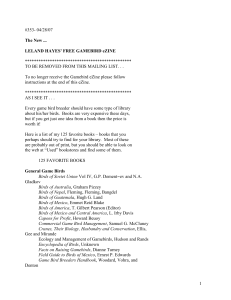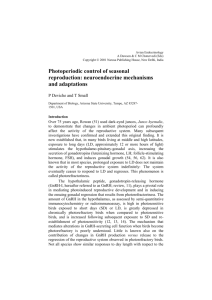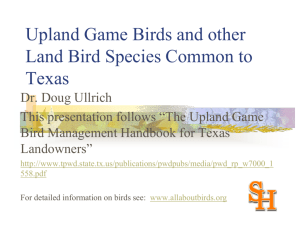Gonadal growth and regression in Japanese quail (Coturnix coturnix
advertisement
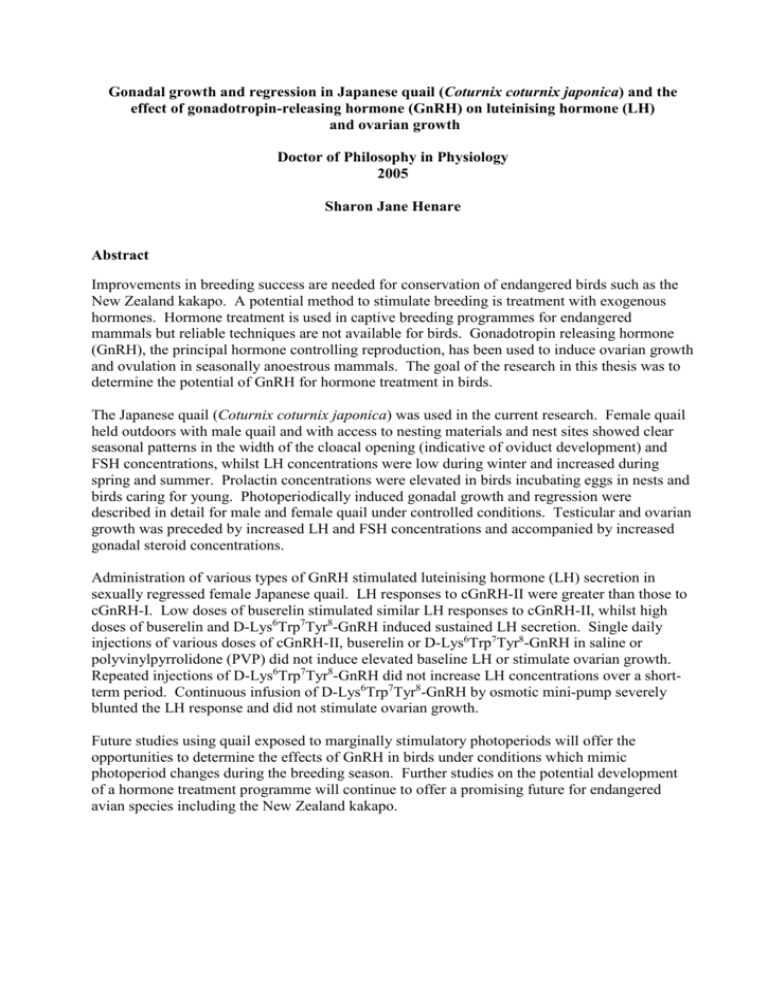
Gonadal growth and regression in Japanese quail (Coturnix coturnix japonica) and the effect of gonadotropin-releasing hormone (GnRH) on luteinising hormone (LH) and ovarian growth Doctor of Philosophy in Physiology 2005 Sharon Jane Henare Abstract Improvements in breeding success are needed for conservation of endangered birds such as the New Zealand kakapo. A potential method to stimulate breeding is treatment with exogenous hormones. Hormone treatment is used in captive breeding programmes for endangered mammals but reliable techniques are not available for birds. Gonadotropin releasing hormone (GnRH), the principal hormone controlling reproduction, has been used to induce ovarian growth and ovulation in seasonally anoestrous mammals. The goal of the research in this thesis was to determine the potential of GnRH for hormone treatment in birds. The Japanese quail (Coturnix coturnix japonica) was used in the current research. Female quail held outdoors with male quail and with access to nesting materials and nest sites showed clear seasonal patterns in the width of the cloacal opening (indicative of oviduct development) and FSH concentrations, whilst LH concentrations were low during winter and increased during spring and summer. Prolactin concentrations were elevated in birds incubating eggs in nests and birds caring for young. Photoperiodically induced gonadal growth and regression were described in detail for male and female quail under controlled conditions. Testicular and ovarian growth was preceded by increased LH and FSH concentrations and accompanied by increased gonadal steroid concentrations. Administration of various types of GnRH stimulated luteinising hormone (LH) secretion in sexually regressed female Japanese quail. LH responses to cGnRH-II were greater than those to cGnRH-I. Low doses of buserelin stimulated similar LH responses to cGnRH-II, whilst high doses of buserelin and D-Lys6Trp7Tyr8-GnRH induced sustained LH secretion. Single daily injections of various doses of cGnRH-II, buserelin or D-Lys6Trp7Tyr8-GnRH in saline or polyvinylpyrrolidone (PVP) did not induce elevated baseline LH or stimulate ovarian growth. Repeated injections of D-Lys6Trp7Tyr8-GnRH did not increase LH concentrations over a shortterm period. Continuous infusion of D-Lys6Trp7Tyr8-GnRH by osmotic mini-pump severely blunted the LH response and did not stimulate ovarian growth. Future studies using quail exposed to marginally stimulatory photoperiods will offer the opportunities to determine the effects of GnRH in birds under conditions which mimic photoperiod changes during the breeding season. Further studies on the potential development of a hormone treatment programme will continue to offer a promising future for endangered avian species including the New Zealand kakapo.
